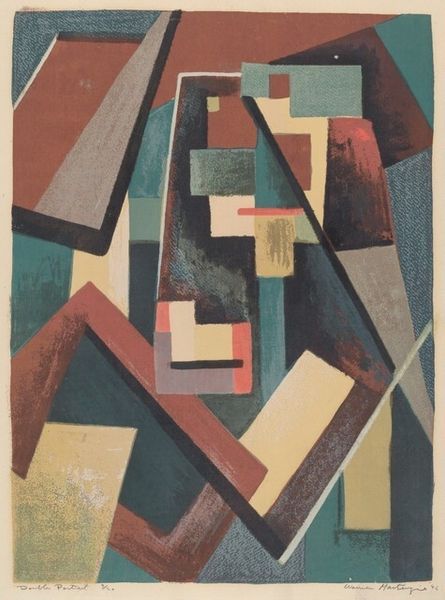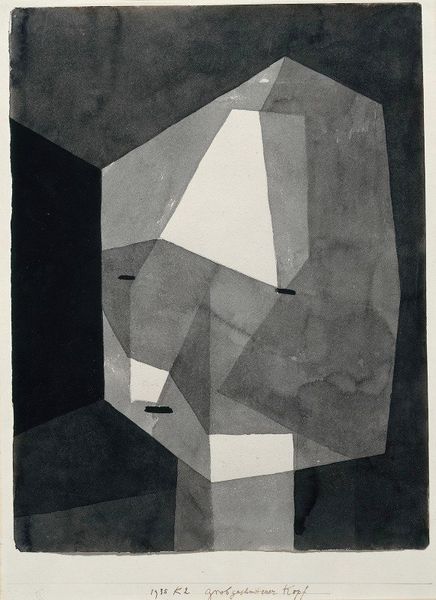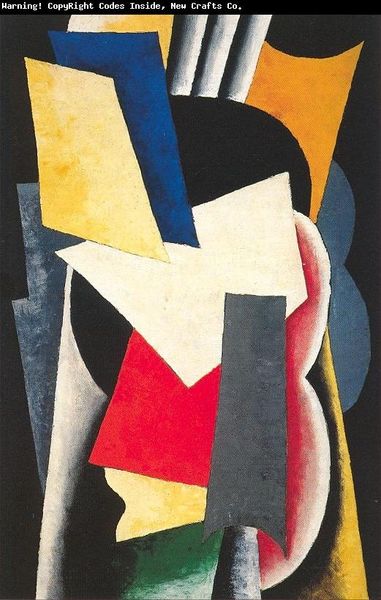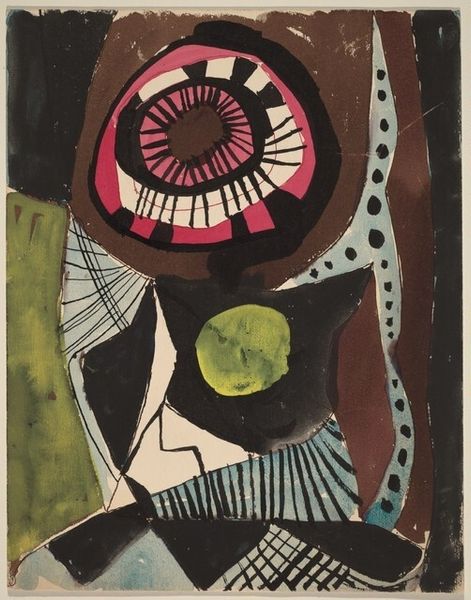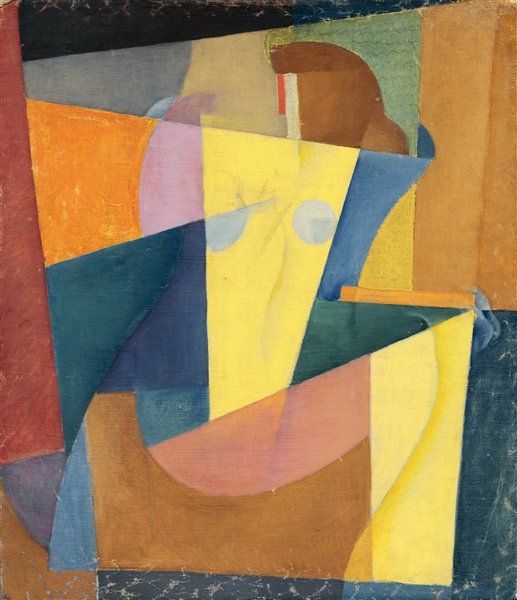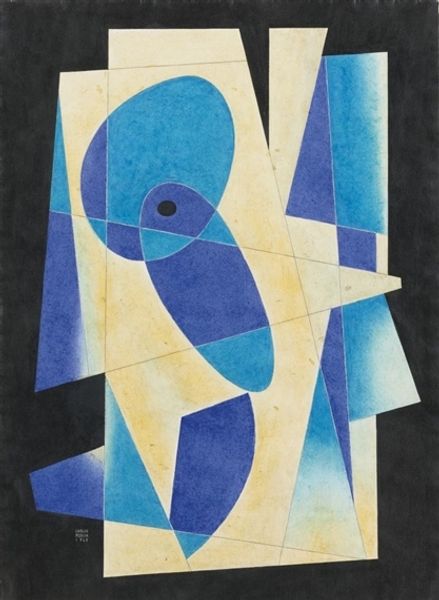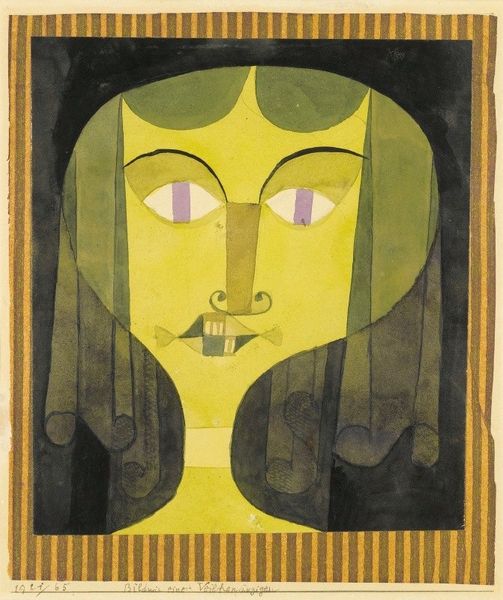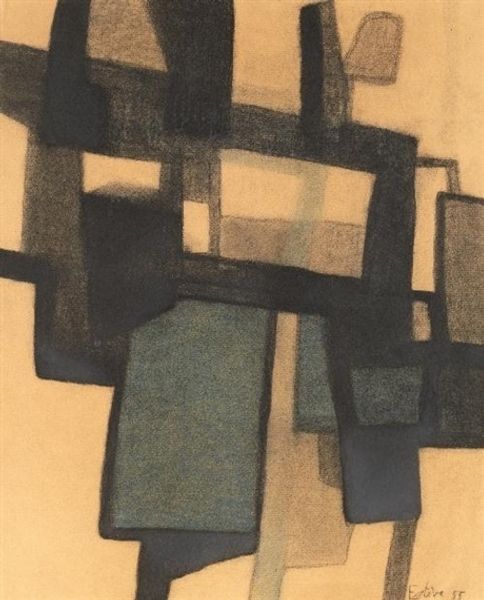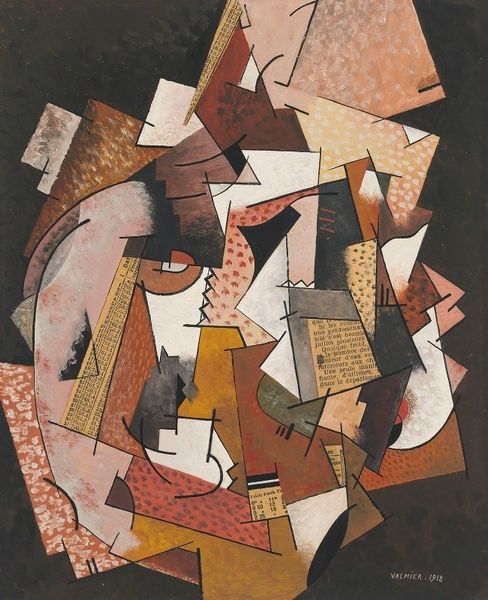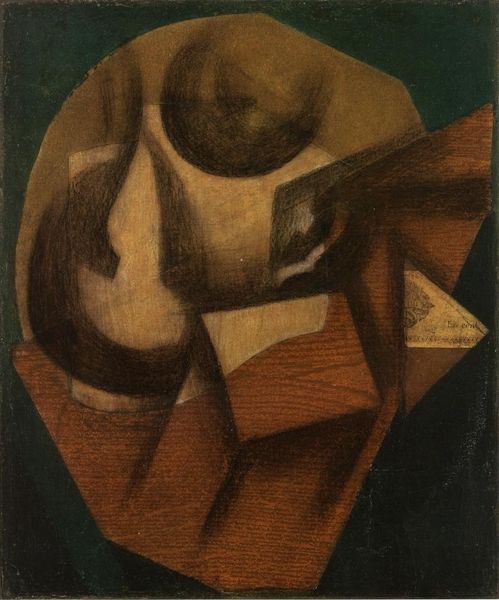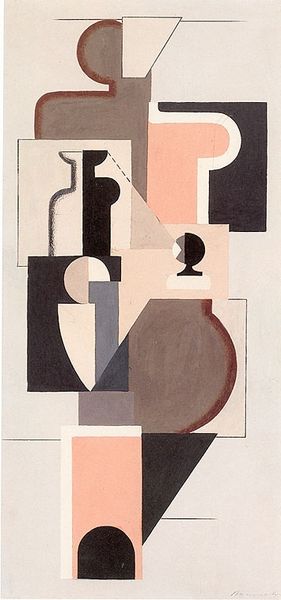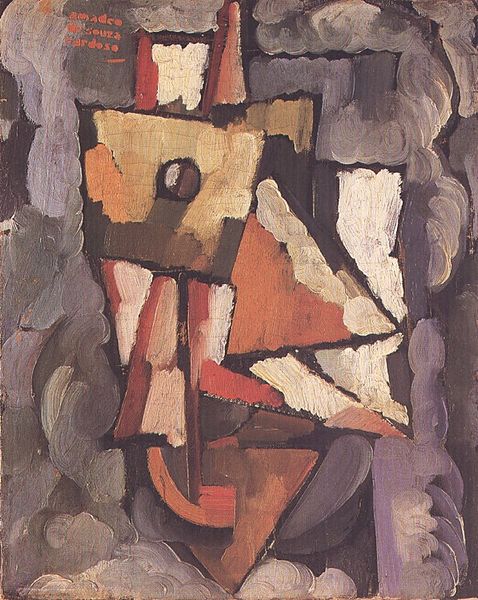![Abstract. Red and Green Gradation [with some cinnibar in vertical format] by Paul Klee](/_next/image?url=https%3A%2F%2Fd2w8kbdekdi1gv.cloudfront.net%2FeyJidWNrZXQiOiAiYXJ0ZXJhLWltYWdlcy1idWNrZXQiLCAia2V5IjogImFydHdvcmtzLzU5ZTUzZjdiLTZkMWQtNGY0NC1iZjdlLWIwZjM2MmUwZjRmZi81OWU1M2Y3Yi02ZDFkLTRmNDQtYmY3ZS1iMGYzNjJlMGY0ZmZfZnVsbC5qcGciLCAiZWRpdHMiOiB7InJlc2l6ZSI6IHsid2lkdGgiOiAxOTIwLCAiaGVpZ2h0IjogMTkyMCwgImZpdCI6ICJpbnNpZGUifX19&w=1200&q=75)
mixed-media, painting, watercolor
#
cubism
#
mixed-media
#
painting
#
mixed mediaart
#
abstract
#
form
#
watercolor
#
abstract pattern
#
geometric
#
geometric-abstraction
#
line
#
bauhaus
Copyright: Public Domain: Artvee
Editor: We're looking at Paul Klee’s "Abstract. Red and Green Gradation [with some cinnibar in vertical format]," a mixed media piece from 1921. It's quite geometric, almost architectural, and I'm immediately struck by how the subtle gradations of color give it a sort of pulsing, internal light. What stands out to you about this work? Curator: The most compelling element is Klee's masterful handling of the materials themselves. The watercolor and mixed media applications weren’t simply about depicting something, but about exploring the inherent qualities of the pigments, their interaction with the paper. Notice how the textures, the bleeds, the imperfections in the wash – they aren't hidden but celebrated. How do these material choices, do you think, challenge the traditional hierarchy separating fine art from craft? Editor: Well, it's almost as if Klee is saying the process is as important as the final image. That watercolor, usually seen as a preparatory medium, becomes the main event. It disrupts the conventional idea of art as purely representational. It's fascinating. Curator: Exactly! And consider the social context: Klee was teaching at the Bauhaus, an institution dedicated to dissolving those same boundaries. It aimed to reunite art with craft and industry, emphasizing the value of the materials and the hand of the maker. The gradations, that sense of a built structure – it speaks to the very process of artistic labor, wouldn't you agree? How does this understanding change your initial impression? Editor: I see it now. The 'pulsing light' isn't just aesthetic; it's a record of the artist's actions, the layering of pigment and water, and the inherent potential of the materials to transform. Knowing about the Bauhaus context really illuminates Klee's motivations. Curator: Precisely. It reframes our understanding, highlighting art’s inextricable link to the processes and societal structures that give rise to it. Editor: I’ll definitely be looking at material choices with fresh eyes from now on. Curator: Indeed. Seeing art through the lens of its materiality reveals a wealth of information often overlooked in more conventional analyses.
Comments
No comments
Be the first to comment and join the conversation on the ultimate creative platform.
